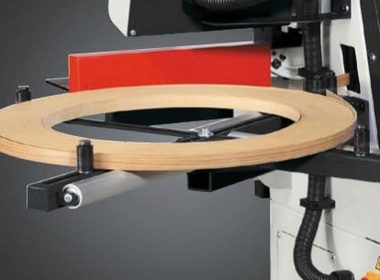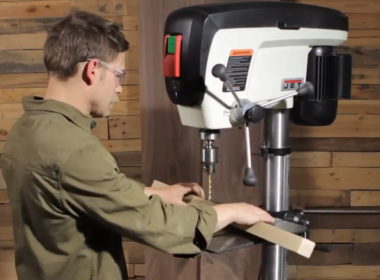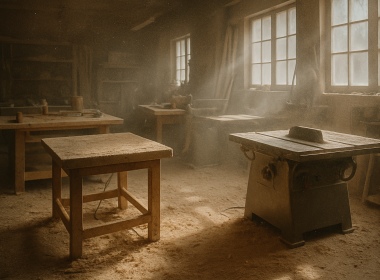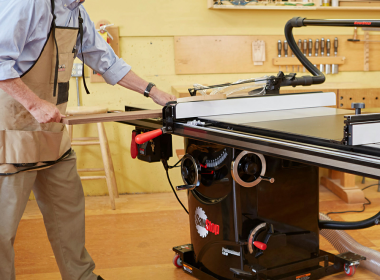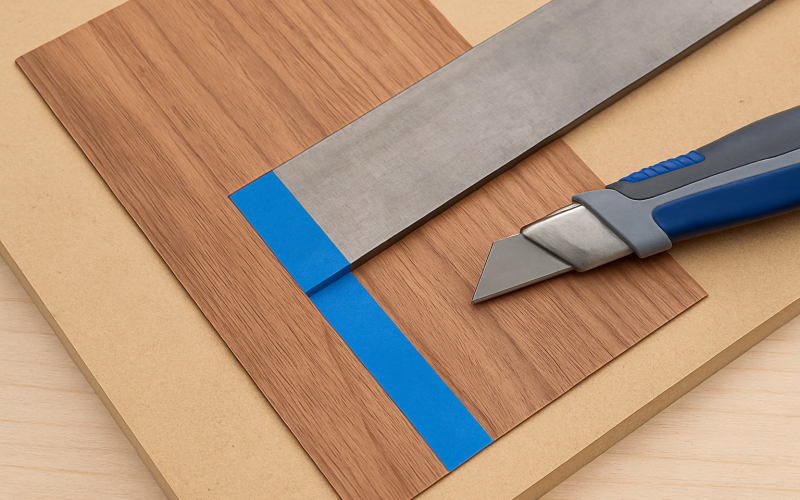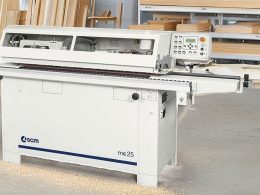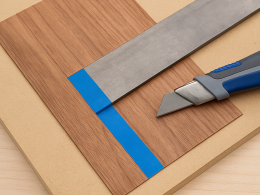Chipping laminate sucks! One wrong move with the blade and your clean line turns into a mess of flakes, cracks, or blow-out. Whether you’re cutting countertops, cabinet panels, or laminate sheets, the wrong blade or sloppy setup can ruin your project fast.
This guide walks you through exactly what tools, blades, and cutting techniques to use with circular saws, jigsaws, and routers. Plus pro tips to avoid chips and get glass-smooth results every time.
Quick-Skim Summary
- For clean straight cuts, use thin-kerf carbide blades with a TCG grind in your circular saw.
- For curves and cutouts, go with fine TPI reverse or down-cut blades in your jigsaw.
- To finish edges, use a flush-trim router bit, and refine with a file if needed.
- Always score the cutline, tape both faces, and use zero-clearance backing to avoid chips.
- Set your blade depth just past the material thickness, and turn off orbital action for jigsaws.
Blade Geometry 101: Why Laminates Chip
Laminate is covered in a hard, brittle wear layer that splinters easily under the wrong blade. Standard wood blades lift fibers upward, which causes chipping on the surface. That’s where blade geometry comes in.
A Triple-Chip Grind (TCG) blade alternates a chamfered tooth with a flat raker, which scores the surface first before clearing material—minimizing breakout. Thin-kerf carbide blades reduce friction and vibration while cutting cleanly with less effort.
Recommended Specs (Cheat Table)
| Tool | Use Case | Blade/Bit | Key Specs | Setup Notes |
|---|---|---|---|---|
| Circular saw | Long, straight cuts | Carbide TCG or fine ATB | 7-1/4″: 40–60T • 10″: 60–80T • Thin-kerf | Track/straightedge; depth = stock + ~1/8″ |
| Jigsaw | Curves, sink cutouts | Reverse/down-cut laminate blade | 10–20 TPI, stiff body | Orbital OFF; slow, steady feed |
| Router | Edge flush/cleanup | Flush-trim w/ bearing | Carbide, sharp | Climb-cut only for micro-nips; light passes |
| File/sanding | Final touch | Fine mill file, 220+ grit | — | Single-direction strokes, light pressure |
The Good-Face Rule
To avoid visible chipping, you need to know which direction the teeth are cutting.
- Circular saws (handheld): Teeth cut upward → place good face down.
- Jigsaws (standard up-cut blades): Teeth cut upward → place good face down.
- Jigsaws (reverse/down-cut blades): Teeth cut downward → place good face up.
- Table saws and track saws (cut from above): Good face up.
Circular Saw Setup for Clean Cuts
Use a carbide-tipped TCG blade with a thin kerf. Set the blade depth to about 1/8 inch beyond the material thickness. Guide the saw using a clamped straightedge or a track. Place a sacrificial board underneath to create zero-clearance support. Score the cutline with a sharp knife and apply painter’s tape along the kerf.
Start the saw at full speed and feed steadily. Avoid stopping mid-cut, and support the off-cut to prevent blow-out at the exit. For perfect results, combine a track saw, TCG blade, knife score, tape, and zero-clearance setup.
Jigsaw Setup for Curves and Cutouts
Choose a reverse or down-cut blade with 10–20 TPI, specifically made for laminate. Turn off the orbital setting to keep control tight. Drill a starter hole wide enough for the blade when making interior cuts.
Place the good face up, and apply tape over the cutline. Support the panel underneath with scrap plywood or foam. Feed slowly through the cut and use relief cuts on tight curves. Always keep the jigsaw’s shoe flat for stability.
If you’re stuck with a standard up-cut blade, flip the panel so the good face is down, and tape both sides.
Router Setup for Flawless Edge Finishing
After cutting slightly proud with a saw or jigsaw, use a flush-trim router bit with a guide bearing to clean up the edge. Choose a sharp carbide bit and make several shallow passes. Avoid removing too much in one go.
Use conventional feed direction, and only use climb cuts to remove small micro-chips—do this with a light touch and full attention to safety. Support the exit side with a backer board to prevent blow-out.
Anti-Chip Checklist (Every Time)
- Score your cutline with a knife.
- Tape both sides of the cutline.
- Add zero-clearance under your workpiece.
- Position the good face correctly (see Good-Face Rule).
- Use sharp blades with the right geometry.
- Feed steadily—never force the cut.
- Catch the off-cut before it drops.
- Finish clean: router → file → fine sandpaper.
Setup Recipes (Copy/Paste)
A) Long Cabinet Rip in Laminate
Circular saw with a thin-kerf TCG blade (60–80T on 10″).
Use a track guide, score the cutline, apply tape, face down, and set depth to +1/8″.
Feed steadily and support the off-cut. Clean up with a router if needed.
B) Sink Cutout in Post-Formed Countertop
Drill starter holes at the corners.
Use a jigsaw with a reverse or down-cut 10–20 TPI blade.
Orbital OFF. Face up, taped line, full support underneath.
Trim final shape with a flush-trim router bit and template.
C) Small Notch or Outlet Cut
Score the shape and make multiple passes with a knife if possible.
Use a jigsaw with a reverse-tooth blade.
Cut slowly and carefully. Clean the edge with a file or router.
Troubleshooting Fast Fixes
Edge Chipping:
Dull blade or poor support. Replace the blade, add scoring and tape, slow down the feed, and improve backing.
Burn Marks:
Usually caused by a dirty or dull blade or moving too slow. Clean the blade, speed up slightly, and reduce cut depth.
Wandered Cut:
Check blade deflection or lack of guide. Use a track or straightedge and let the teeth do the cutting.
Vibration or Chatter:
Clamp tighter, add a denser backer, and use a thinner kerf blade to reduce resistance.
Safety Essentials
- Wear eye, ear, and dust protection.
- Work on a stable surface and always clamp your material.
- Keep your hands away from exit zones—off-cuts can kick.
- Unplug tools before changing blades or bits.
- Inspect blades, bits, and baseplates for damage or buildup.
FAQs
What’s better: TCG or ATB?
TCG is more forgiving and designed for laminate. Fine-ATB works but is more prone to chipping.
Do I need a specialty laminate blade?
Not if your TCG blade is sharp and you follow best practices. Specialty blades help for heavy production use.
What’s the best TPI for laminate jigsaw blades?
Use 10–20 TPI with a reverse or down-cut geometry to protect the laminate face.
Can I skip the scoring step?
It’s possible—but scoring plus tape consistently reduces edge damage on visible cuts.
Should I use a file or router for finishing?
Use a flush-trim router for speed and consistency. Reach for a file when refining small areas.
Final Thoughts: How to Cut Laminate Without Chipping
Build your anti-chip kit: grab a thin-kerf TCG blade, a reverse-tooth jigsaw blade, a flush-trim router bit, painter’s tape, and a zero-clearance insert. Add a quality straightedge or track, and your laminate cuts will stay clean, crisp, and professional.
Continue Reading → How to Cut Veneer Cleanly: Tools, Methods, and Pro Techniques
Continue Reading → Wood Veneer vs Laminate: How to Choose the Right Surface


